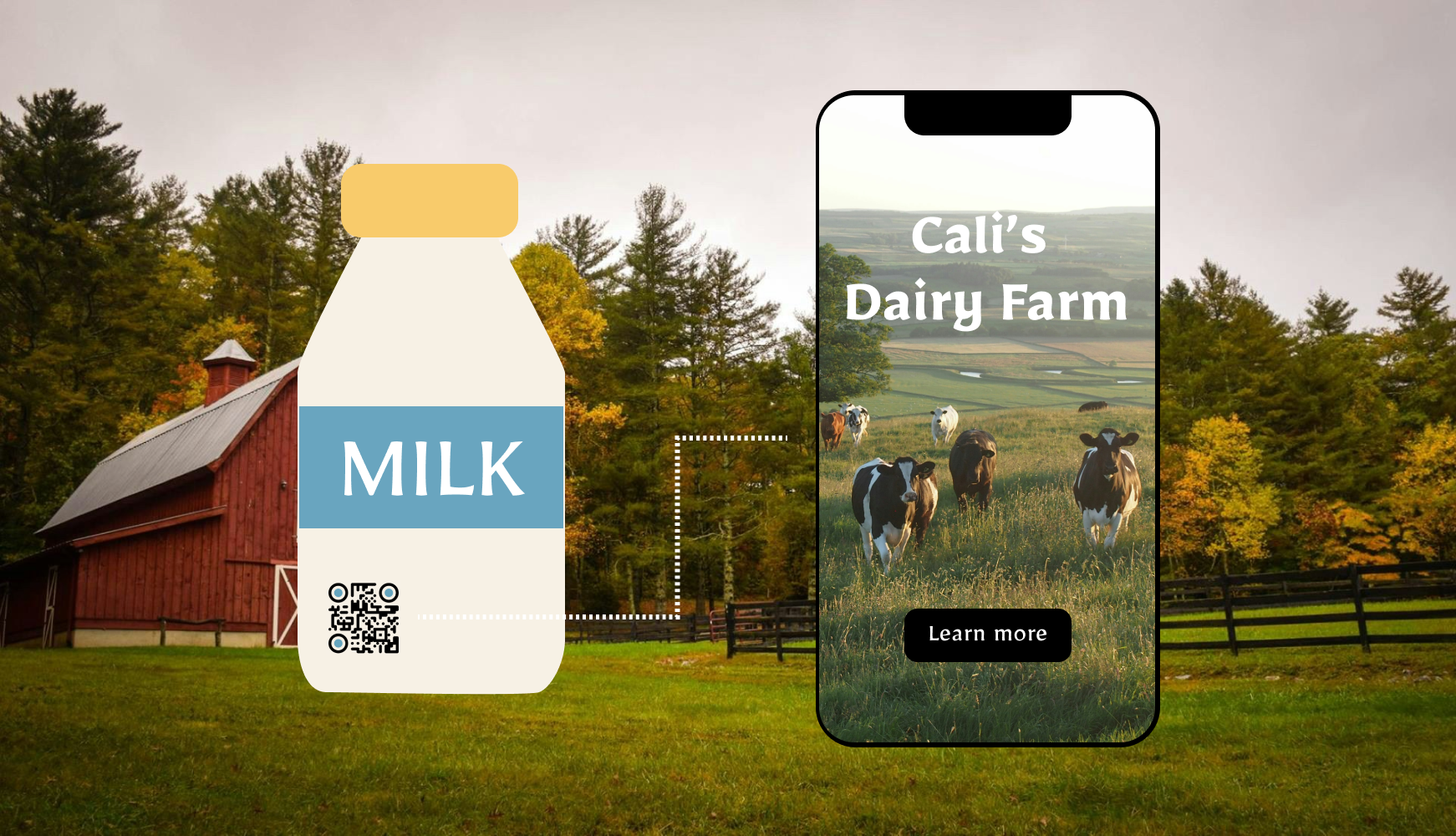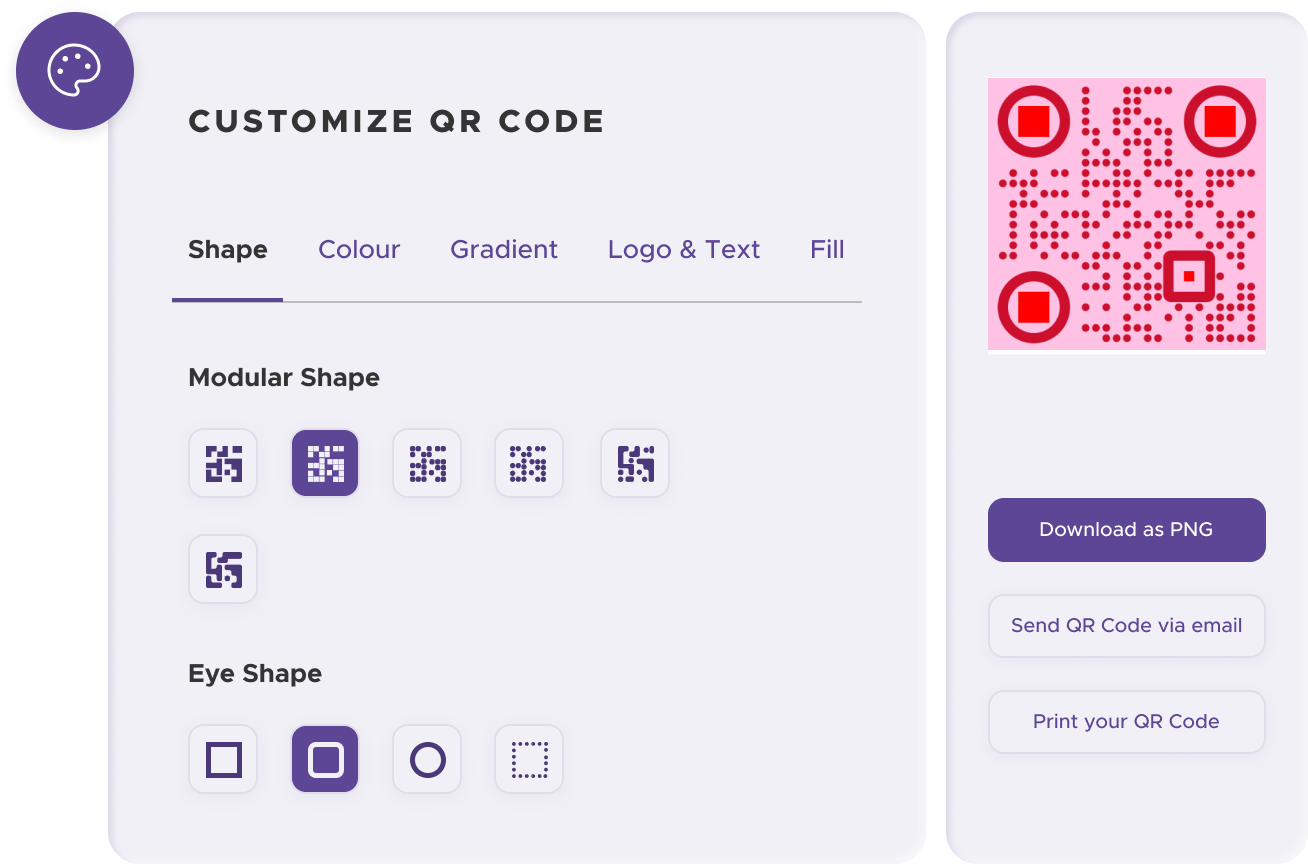Frustrated by limited space on food packaging? Looking to boost transparency and connect with tech-savvy consumers? QR codes might be the solution you need. These versatile squares do more than link to websites. They reveal detailed product information, share recipes, and track valuable data – all easily accessible with a quick scan.

In today's digital age, consumers crave transparency and engagement. QR codes on food packaging are no longer a futuristic concept, but a trending solution for the food industry. These versatile squares bridge the gap between physical packaging and the digital world, offering a wealth of information and interactive experiences at your fingertips.

Using QR codes on food packaging offers a multitude of benefits, with increased transparency being a key advantage. QR codes enable brands to share detailed information about sourcing and ingredients, fostering trust with consumers. By scanning a QR code, customers can access data about the product, including the origins of ingredients and information on ethical sourcing practices. This transparency helps consumers make more informed choices and builds a positive brand image.
Moreover, QR codes allow brands to showcase certifications and awards, further validating their product's quality, organic status, or adherence to fair-trade practices. This helps differentiate products in a competitive market and reinforces the brand's commitment to high standards.

Using QR codes on food packaging enhances the customer experience by offering recipes and cooking tutorials, increasing product utility and encouraging repeat purchases and brand loyalty.
Adding QR codes to food packaging allows you to provide nutritional information in multiple languages, catering to a global audience. They can also link to social media for recipe inspiration and brand engagement, driving brand awareness and fostering a sense of community among consumers.

Improved sustainability is a key advantage of adding QR codes to food packaging. Brands can significantly reduce packaging clutter, which in turn minimizes environmental impact. QR codes allow for the delivery of additional information, such as extended nutritional details, storage instructions, or recycling guidelines, without the need for more packaging material.
Moreover, QR codes enable brands to offer digital loyalty programs, accessible through a simple scan. This eliminates the need for physical loyalty cards, reducing paper waste and creating a more sustainable packaging solution.
Using QR codes on food packaging can significantly boost sales and enhance marketing efforts. QR codes streamline the purchasing process for repeat customers by enabling quick reordering through linked online stores.
A simple scan can direct them to your online store, making reordering your product easy, encouraging customer loyalty, and increasing repeat sales. Additionally, QR codes can offer exclusive discounts and promotions, giving customers access to special deals or promotional codes. This strategy incentivizes purchases and rewards loyal customers, driving sales and fostering repeat business.

QR codes can be a two-way street for valuable customer insights. Tracking QR code scans provides a window into customer engagement with your campaigns. Studies show that over half of consumers scan QR codes on food packaging, offering a significant potential for feedback and interaction. This data can be used to refine your marketing strategies and understand what resonates with your audience.
Having QR codes on the food packaging allows customers to share their thoughts on your products or promotions, providing direct feedback that can be used to improve your offerings and ensure they align with customer preferences. After all, happy customers are more likely to become loyal brand advocates.
Ready to discover how QR codes can transform your business?
Start by creating your custom QR Code today.
QR codes can be a two-way street for valuable customer insights. Tracking QR code scans provides a window into customer engagement with your campaigns. Studies show that over half of consumers scan QR codes on food packaging, offering a significant potential for feedback and interaction. This data can be used to refine your marketing strategies and understand what resonates with your audience.
Having QR codes on the food packaging allows customers to share their thoughts on your products or promotions, providing direct feedback that can be used to improve your offerings and ensure they align with customer preferences. After all, happy customers are more likely to become loyal brand advocates.

By scanning a QR code, consumers can access an interactive map detailing the journey of the product from farm to table, thereby fostering transparency and trust. This also allows brands to highlight their commitment to sustainability, linking to information about eco-friendly practices like responsible farming methods or recyclable packaging.

QR codes on food packaging can unlock a world of recipes and inspiration. By scanning the code, consumers can access signature recipes using the product, sparking culinary creativity. Additionally, the QR code can link to a platform where customers share their own recipes, fostering engagement and building a sense of community around the brand.

QR codes on food packaging can offer a wealth of information, such as a detailed nutritional breakdown in various formats to cater to specific dietary needs. This can include charts, graphs, and highlighted sections for allergens.
QR codes also ensure inclusivity by providing clear allergen information, helping customers with dietary restrictions.

QR codes can transform your food packaging into interactive marketing tools. Embed a URL QR code that links to a landing page with exclusive discounts, coupons, or contest entry forms. This strategy encourages repeat purchases and boosts brand engagement. Using URL QR codes is ideal for promotions, as it seamlessly directs users to specific contest or discount webpages.

QR codes can turn your food packaging into a gateway for social media engagement. Include a Social Media QR code on your packaging, allowing customers to connect with your brand with a simple scan. This code stores your social media handle and platform, like your Instagram username.
Users can instantly follow you for content such as recipes using your product, behind-the-scenes glimpses into your company, and exciting brand announcements. By fostering social media connections, you can build brand loyalty and encourage user-generated content featuring your product.
Adding QR codes on food packaging can change how consumers interact with your products. From providing nutritional information and recipe suggestions to offering discounts and loyalty rewards, QR codes offer a versatile and engaging platform for brand-consumer interaction.
Here's a guide on creating QR codes for food packaging:
Select a reliable QR code generator like QRStuff, which offers a range of features to create dynamic and customizable QR codes suited for your business needs.
Ready to discover how QR codes can transform your food packaging?
Start by creating your custom QR Code today.
Depending on your goals, choose the appropriate type of QR code for your food packaging. This might include:

Ensure your QR code aligns with your brand identity. QRStuff provides various customization options, allowing you to adjust colors, add logos, and create a visually appealing QR code that is consistent with your branding.

Before implementation, test the QR code to ensure it scans correctly and directs users to the right content. This step is crucial to avoid any frustration or inconvenience for your customers.

Download the QR code and integrate it into your promotional content. This can include printed materials like flyers, brochures, posters, or online platforms such as websites, social media, and email campaigns.

Use QRStuff’s dashboard to track the performance of your QR codes. Collect feedback and measure the success of each code, allowing you to optimize their use and improve customer engagement.

Don't settle for a generic website landing page! QR codes on food packaging are a prime opportunity to provide targeted content directly related to the product. This could include recipes that utilize the product, sourcing and sustainability practices information, or even nutritional information or allergen details. Tailoring the content enhances the user experience and demonstrates brand value.
Additionally, include a clear Call to Action (CTA) to incentivize users to scan the QR code. Tell them what they'll gain by scanning, such as "Unlock a secret recipe!" or "Learn about our farm-to-table practices." This makes the QR code more engaging and increases the likelihood of users scanning it to discover the valuable information you've curated for them.
While standard QR codes tell you how many people scanned the code, they don't reveal much about user behavior. This is a missed opportunity! Consider using dynamic QR codes. These are like upgraded QR codes that function the same way for scanners, but offer a wealth of data behind the scenes.
With dynamic QR codes, you can track what content users engage with after scanning the code. Did they click on the recipe link? Read about your sourcing practices? This valuable user behavior data allows you to understand what resonates most with your audience.
Imagine learning that recipe ideas are far more popular than sustainability information. This insight can inform future marketing strategies, allowing you to tailor content to user preferences and maximize engagement. By using dynamic QR codes and analyzing user behavior, you can transform these tiny squares into powerful marketing tools.
When integrating QR codes into your food packaging design, it's crucial to consider the material and placement to ensure optimal scannability and user experience. QR codes rely on good contrast for easy scanning. Therefore, avoid placing them on reflective or metallic surfaces that can cause glare, hindering readability.
Additionally, choosing an appropriate size for your QR code is essential. If the QR code is too small, it will be challenging for smartphones to scan it accurately. Conversely, if it's too large, it might occupy valuable real estate on your packaging, affecting the overall design aesthetics.
When selecting the packaging material, opt for surfaces that provide sufficient contrast for the QR code to stand out. Matte finishes are preferable over glossy ones, as they reduce glare and improve readability. Conducting thorough testing with different lighting conditions and scanning devices can help you determine the optimal size and placement for your QR codes, ensuring a seamless user experience.
Start by creating QR codes for free with QRStuff, or subscribe today to unlock full design capabilities, generate unlimited codes, and access all file types and more!
Yes, you can create QR codes for essential Food Packaging needs like promotional offers, or customer feedback forms using our free QR code generator. However, customization options, such as branded QR codes or detailed scan analytics, require a subscription.
A subscription unlocks advanced features tailored to Food Packaging businesses, including dynamic QR codes that allow real-time updates, detailed scan analytics to track customer engagement, and customization tools to align QR codes with your branding. These features help improve efficiency, enhance customer experiences, and strengthen your business's overall impact. See the full list of features associated with each subscription here.
You can reach out to us at support@qrstuff.com for assistance. Free users receive email support with responses typically provided within 12–24 hours. Subscribers enjoy priority support via email, phone, or live chat for faster resolutions. To help us assist you efficiently, please include your account details, QR code ID, and a brief description of the issue when contacting support.